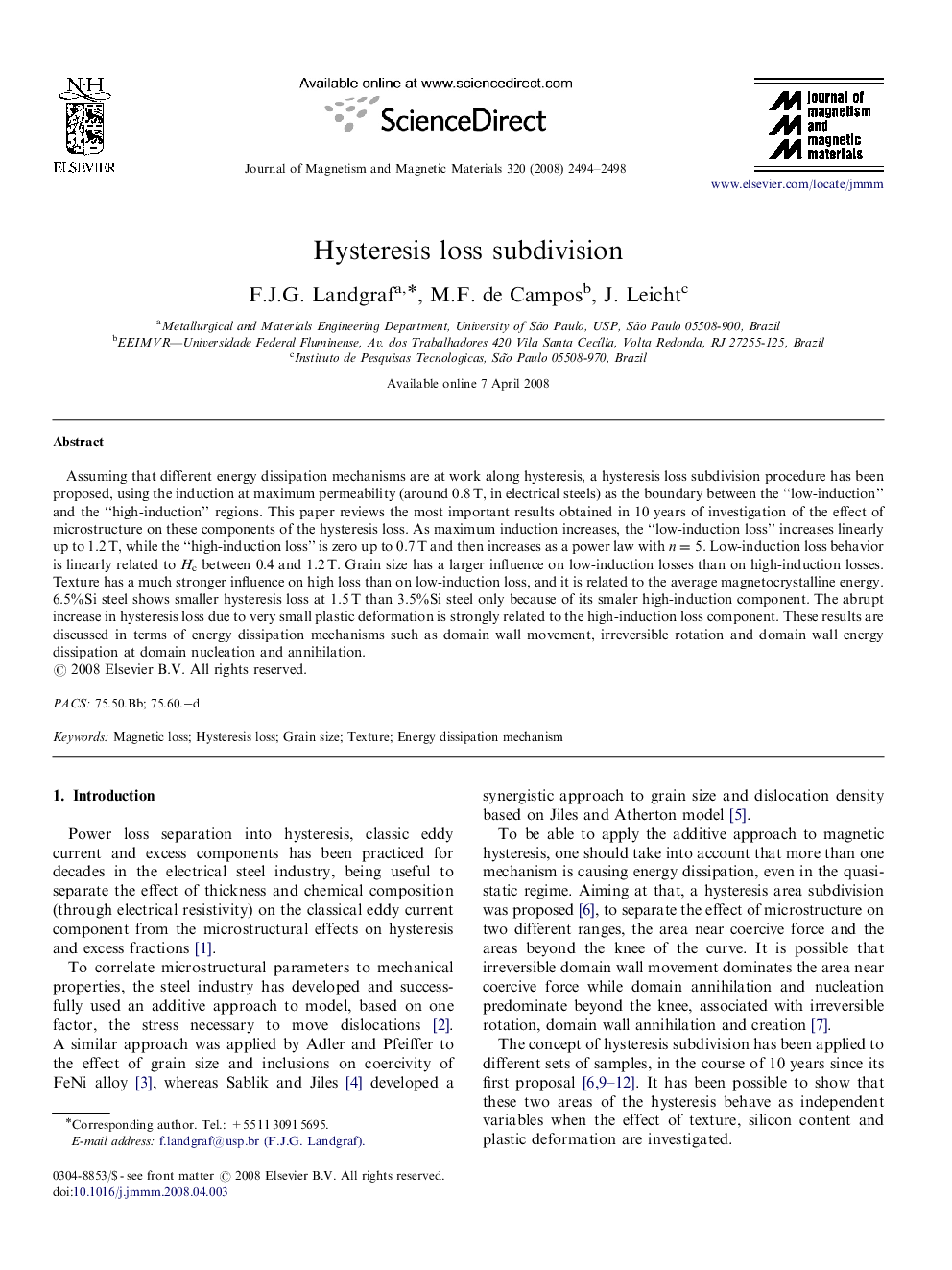| Article ID | Journal | Published Year | Pages | File Type |
|---|---|---|---|---|
| 1803505 | Journal of Magnetism and Magnetic Materials | 2008 | 5 Pages |
Assuming that different energy dissipation mechanisms are at work along hysteresis, a hysteresis loss subdivision procedure has been proposed, using the induction at maximum permeability (around 0.8 T, in electrical steels) as the boundary between the “low-induction” and the “high-induction” regions. This paper reviews the most important results obtained in 10 years of investigation of the effect of microstructure on these components of the hysteresis loss. As maximum induction increases, the “low-induction loss” increases linearly up to 1.2 T, while the “high-induction loss” is zero up to 0.7 T and then increases as a power law with n=5. Low-induction loss behavior is linearly related to Hc between 0.4 and 1.2 T. Grain size has a larger influence on low-induction losses than on high-induction losses. Texture has a much stronger influence on high loss than on low-induction loss, and it is related to the average magnetocrystalline energy. 6.5%Si steel shows smaller hysteresis loss at 1.5 T than 3.5%Si steel only because of its smaler high-induction component. The abrupt increase in hysteresis loss due to very small plastic deformation is strongly related to the high-induction loss component. These results are discussed in terms of energy dissipation mechanisms such as domain wall movement, irreversible rotation and domain wall energy dissipation at domain nucleation and annihilation.
